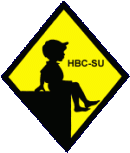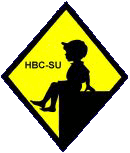
This did not change until after World War II when the Italian Economic Miracle began to transform the country (1950s). Notice how well dressed the boys here are and fishing villages were rather poor communities. It reflects the powerful economic forces being unleashed in Italy by capitalism. Also we begin to see flip-flops at the end of the decade, very inexpensive footwear. We see many major changes by the 1950s. The Italian school system had expanded, more school and more children attending them. And as a result, the literacy has increased hugely. We note even in poorer areas like the south and Sardinia that litercy was approxging 80 percent as reported in the 1951 census. Smocks were very common, but unlike earlier decade, we see far fewer childldren coming to school barefoot. Fishing villages as we see here were still an exception (figure 1).
Related Chronolgy Pages in the Boys' Historical Web Site
[Main Chronology Page]
[The 1900s]
[The 1910s]
[The 1920s]
[The 1930s]
[The 1940s]
[The 1950s]
[The 1960s]
[The 1970s]
Navigate the Relate Boys Historical Clothing Style Pages
[Return to the Main Italian school footwear 20th century chronology page ]
[Return to the Main Italian school footwear chronology page ]
[Return to the Main Italian school footwear page ]
[Return to the Main Italian sandal page]
[Return to the Main school sandal country page]
[Return to the Main Italian school uniform garment page]
[Long pants suits]
[Short pants suits]
[Lederhosen]
[Knee socks]
[Eton suits]
[Jacket and trousers]
[Blazer]
[School sandals]
Navigate the Boys' Historical Clothing School Uniform Pages
[Return to the Main Italian School Uniform Page]
[Return to the Main School Uniform national page]
[Australia]
[England]
[France]
[Germany]
[Ireland]
[Japan]
[New Zealand]
[Scotland]
[United States]
Navigate the Boys' Historical Clothing Web Page
[Introduction]
[Activities]
[Biographies]
[Chronology]
[Cloth and textiles]
[Clothing styles]
[Countries]
[Topics]
[Bibliographies]
[Contributions]
[FAQs]
[Glossaries]
[Images]
[Links]
[Registration]
[Tools]
[Boys' Clothing Home]
